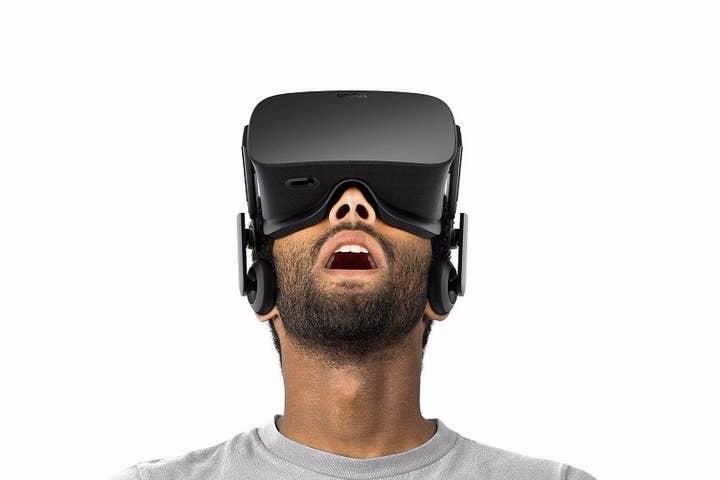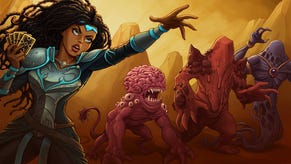VR: The next big thing in audio?
Game On Audio exec says new tech could have a huge impact on a long-overlooked aspect of game development
Much of the buzz around virtual reality revolves around the way it lets users see new worlds, but the technology's going to change the way people hear them, as well. Speaking with GamesIndustry.biz recently, Game On Audio CEO Sam Girardin and executive producer Jean-Christophe Verbert said the rise of VR could be a boon for audio professionals in the game industry.
"I think with VR getting there, most developers are discovering that audio was a bigger part of their project than they thought," Girardin said. "For any medium, audio's always been underestimated, or under-scoped. But it's really part of the experience. If you look at the abilities of the platforms we have today, it's been exploding, but the mindset across the industry hasn't changed a lot.
"For us, we're going to use that opportunity to raise the bar and push it further. Not because of the creativity or technicality of what we do, but the fact is it's so much easier to point out to producers, developers, programmers--whoever is in the chain--something like, 'This part is missing X amount of game objects, or there's no ambiance over there, or we don't believe that scene because you're missing audio.'"
"Because the immersion is so important in VR, of course it's totally tied with audio, and if there's something wrong in the audio in the VR experience, the spectator will also know right away."
Jean-Christophe Verbert
Verbert echoed that sentiment: "Because the immersion is so important in VR, of course it's totally tied with audio, and if there's something wrong in the audio in the VR experience, the spectator will also know right away. They'll actually get right out of the experience, so it's very, very important."
The more respect and consideration developers give to their games' audio, the better things will be for Game On Audio. The Montreal-based outsource partner has been assisting developers with audio for 13 years, adapting to the needs of an industry that has shifted considerably over that time.
"When we started in 2002, an average game was about 500 lines of dialog for AAA, though it wasn't called AAA back then," Girardin said. "Today, with a typical AAA [project], 25,000 lines is a small amount. Now they tend to be between 50,000 and 100,000. And the 100,000 bar has been pushed for a couple years already."
Despite that escalation in scope, Girardin said the cost of audio in games hasn't risen in step. The studio recently finished up work on Quantum Break for Remedy, and while Remedy spared no expense on the cinematic production values for the title, Girardin said the budget was essentially the same as other titles it's worked on in the past.
"To be honest, it's not really more costly to do it right and do it once than it is to do it last minute, with crunching and multi-studio development and bringing in a lot of contractors," Girardin said. "Production is key. Knowing where you're going is key. My mom would say you do it once but do it right, and she would be very successful in the game business because it's really the truth."
"Start-ups are exploding in the indie world, but they're more cautious about their budget. So when we work with them, we do it once."
Sam Girardin
Girardin said one big difference in the quality of results developers get from audio and the amount they pay for it is preparation.
"For us, a developer like [Remedy] who wants to push the bar on storytelling and get audio that is more like a feature film, they need to plan the whole project accordingly, from design to story to script to everything, so they can be not crunching the audio at the end, not crunching the script. And they can have a real 30,000-foot view on their game to make sure the whole story makes sense."
Game development is often about juggling interdependent systems, but extending that analogy, audio would be a ball dropped with some frequency. But given a team that really has its act together, Girardin suggested stellar results can be achieved even by small studios. For example, he pointed to Red Barrel Studios, which worked with Game On for its horror title Outlast. The Red Barrel team had 10 people at the time, and Girardin said at least that many Game On employees touched the game's audio.
"I think those guys had a very clear idea of the game they wanted to do, and I think that's why they were able to ship such a great experience in a small amount of time with a small number of people," Girardin said.
While Game On Audio has worked with other small teams before, Girardin doesn't see indies becoming a huge source of business for him. Even so, there are a few aspects of game audio that indie outfits might do better than their AAA counterparts.
"Start-ups are exploding in the indie world, but they're more cautious about their budget," Girardin said. "So when we work with them, we do it once. It's really rare that we start again because they forgot [something]. They're very precise and don't have a lot of resources, so they have to be cautious. So maybe that's a way they can afford to get professional audio in their games."
"Even some big players don't believe in audio, but some do... Some game directors don't care, and others say it's 50 percent of their experience. It's really subjective."
Sam Girardin
That said, there's still plenty of variation as to how seriously studios take audio.
"It's also tied to our company culture," Girardin said. "Even some big players don't believe in audio, but some do. And it's the same thing for indies. Some game directors don't care, and others say it's 50 percent of their experience. It's really subjective."
Developers are also split on issues like whether to employ celebrity voice talent or less expensive career voice actors. Obviously, Girardin is capable of working with both, though he's not always sure the difference in cost is worth it.
"For a producer or somebody developing a game, you need to ask yourself, 'Is it going to really do something for my game? Is it just because I want that celebrity in my game, or because that celebrity will bring something to it?' And it can be more than just marketing or sales of the game. In my opinion, celebrities don't bring more copies sold. Just because you have a celebrity doesn't mean you're going to sell more copies."
That said, he did note that some games have used celebrities well, and the additional good press achieved through that could save money on marketing a title. In either case, the decision to use celebrities or not should ultimately be about what--and who--best fits the project.
Another attention-getting strategy that Girardin said only pays off in the right circumstances is performance capture, which Game On Audio has been offering as a service since 2011.
"Even some big players don't believe in audio, but some do... Some game directors don't care, and others say it's 50 percent of their experience. It's really subjective."
Sam Girardin
"We did the mo-cap turn in 2011 because I thought that full-performance capture was going to pick up, which it did," Girardin said. "But voice actors will still exist, that's for sure. The biggest challenge with full performance capture is having the right people to direct them, and also having the right actors, the right cast that can play with their body, because it's full-body acting, right?
"Full performance capture is another opportunity, but to be honest, most of the time when we get character descriptions, the characters they've been thinking of, we look at the actor and it's most of the time based on the way they sound, how they look, but not how they move, which is something very very important for the mo-cap full performance capture.
"Full performance capture is another opportunity, but to be honest, most of the time when we get character descriptions, the characters they've been thinking of, we look at the actor and it's mostly based on the way they sound and how they look, but not how they move, which is something very, very important for the full performance capture."
That doesn't mean performance capture is only worth it with an actor like Andy Serkis. Verbert said the biggest difference he's seen between an effective capture and one that doesn't come together just right is the director of the shoot. He pointed to the results Quantum Break's drama director Stobe Harju got from the game's cast, saying the Finnish filmmaker's background in movies (2012's Imaginaerum) and games (the Alan Wake franchise) paid off both on set and in the finished product.
"Yes he got a star cast, obviously, but the way he directed his actors, they weren't blind on the set. They really knew what was going on and the environments [they were supposed to be in]," Girardin said. "It's a mix of a lot of things. It's about the production, how you prepare your shoot, how you prepare your cast, how your director is prepared."
It's the same approach Girardin says he takes with Game On.
"To be honest, being in this business for 14 years, the key is about how you prepare yourself and your project," he said. "This is how you exceed expectations on quality and lower the risk of busting your budget."









